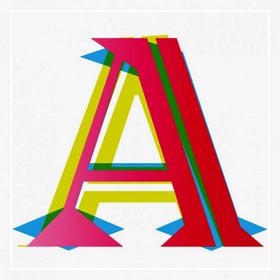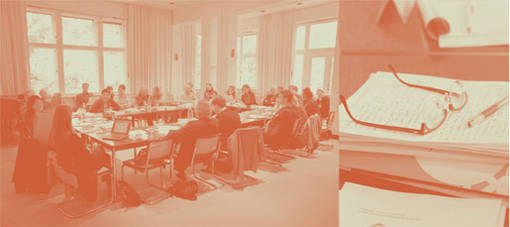This piece offers an ‘inside-out’ perspective on everyday life in a militarized space. As a researcher and a Kashmiri, the writer is struggling to document the ordinary-everyday lives of people in an extra-ordinary violent setting of Kashmir. The idea of this piece was conceived in September 2019 when the writer visited Kashmir to check on her family after being unable to contact them for several weeks post consecration of residues of Article 370, [a temporary constitutional provision that supposedly conferred an ‘autonomous’ status on the region of Jammu & Kashmir within the Indian union]. Distance, disconnection and an overwhelming fear bring her home. As she walks through the city streets of Srinagar she visualizes and relives what remains hidden from the world outside. A mundane practice like strolling brings out the play of power and violence. The desolation and hence the absence of life in the streets continues for more than a year. As she tries to reach out and touch the fading images the impish laughter of the emptiness and nothingness evoke feelings of dread and a sense of helplessness.
City streets carry the momentum of the life worlds of people inhabiting them. But what about deserted streets? If the consumption of space, by way of its use, gives an idea of a place, what do empty spaces convey? Walking through the streets of Srinagar during siege, emptiness strikes as a horrific allegory of violence. Long before a virus invaded the world, an entire population was already immobilized. Distanced even from their shadows. Access to public spaces denied. All and any form of communication snapped. Gathering of more than four people outlawed. While governments elsewhere were busy strategizing lockdown under the ‘stay home, stay safe’ slogan, an eight million people were caged in the protective bubble of home with the threats of destruction hanging in mid-air.
What tragedy has befallen this place? Wrecked by seven decades of violent conflict, Kashmir continues to be in a state of disordered order. Militarized, invaded, contested – a nuclear flashpoint, the current status of Kashmir echoes the violent past. The disorder is intrinsic to the arbitrariness of established control. The pattern of impunity combined with rhythms of violence animates order. Killing is the daily grind, repression a routine. Everything that happens here revolves around the twentieth-century accession fraud. That was 1947, the year of partition of the Indian subcontinent. Later in the same year, Indian troops infiltrated the region claiming control over everything. They came and stayed, for what seems like an eternity. Barricaded the entire valley. Set-up camps and check-points; diffused and scattered. Built ditches, fences and walls. Erected roadblocks. Spaces subverted. Roads defaced, streets forbidden. Blocked entry and exit points bear witness to the bating breaths fading into obscurity. Forced desolation became commonplace, a way of life. Absences, a constant visual trope.
The absence itself is a metaphor for the presence of something undesirable. Emptiness is a hidden transcript. Of terror. Leaking from all directions. Death and decay of social interactions. The immobile, deserted, empty streets filled with alien figures are more than just a representation of horror(s). They are the transparent texts that are being constantly overwritten to alter the geography and history of this place. Fetishes, sickening to hearts, are loaded at every turn demanding allegiance. Sovereignty claims visual convergence! There are other marks on the walls too, proclaiming: ‘We don’t belong to you’. To inject false consciousness, ill-legitimate vaguely worded prescriptions shoved down the throats: pledge or perish. There are no trials, only sentencing. Precarity rules!
In August 2019, the hustle-bustle of streets was muted for an indefinite period. Hishie katha – ordinary is what we get used to. Days before the valley was draped in the blanket of silence, people were asked to stock up their essentials for four months in anticipation of something ominous. Rumours floated in the markets. Lined up in queues at fuel and ration stations, people discussed war possibilities in a nonchalant manner. As if war doesn’t scare them! They know their life worlds could explode, any moment, any time – in any direction. They can read the hidden inscriptions. The invisible death threats, ghosts lurking in silence, a parade of armed skeletons galloping towards them. Even when shut behind the doors of visibility they can see the unseen. The knowledge about the cosmos they belong to is passed to them in silence. This place is haunted. They want to scream but they are not allowed to speak more than they see.
Flying checkpoints were set up, even though many of them are already here. More paras called in. Troop surges. The mesh of razor wires spread throughout the length and breadth of the valley – North, South and Center. An entire population held hostage. Behind the magnificent frame, a crude bloodbath was planned. ‘Shoot at sight’, they commanded. Nobody stepped out. Donning the shrouds of silence, they didn’t act. They know the consequences. Their death is scripted by the master-killers. Getting killed now is stupid. With bullets waiting around every corner they are all disposable. Pale-anxious faces sleepwalking like shadows in the mist, hungrily waiting for the spell to break. Eyes riveted on the drones and jets circling overhead. On the morning of August 5, some five hundred miles away, abrogation of ‘special status’ was pronounced as the ‘final solution’, that would usher in an ‘era of good governance’. The victory of ‘good’ over ‘evil’. This could be it? People sighed in relief -less- relief.
Shuttered by a different kind of plague all sounds and movements were ground to halt. In stillness the uneasy calm of forbidden streets creeps in closer and closer. The maze of potent death traps is laid everywhere. You see them as you open the door while walking on the street. Right next to your favourite bakery, twenty-six battalion. Outside the community park, one hundred sixty-one battalion. While heading to work, fifty-two battalion. On the way to school or hospital, twenty-three battalion. Unsettling repetitions. Guided by the laws of oppression, these infinite anonymous faces are the architects of these military scapes. The encampments circled by armoured vehicles extend into the textures of ordinary-everyday life. Their perpetual gaze is felt through intrusive checkpoints and watchtowers. Reinforced by the writings on the heavily guarded walls, “Military Area/You are Being Watched /Armed Response to Trespassing.” You cannot ignore the predatory warnings even if you want to. They are the constant reminders of everything wrong in this part of the world. Terror and its corollaries – fear, anguish, disquiet stir the consciousness of the passerby. The awareness of being watched by the figures as rigid as the concertina produces a knot in the gut. It makes you wary of your existence. You feel dizzy. With weapons pointed in every direction, you can get caught never to be seen again. If you stop with an awkward gait, you can get killed. If you dare not to stop you still get killed. Fight or flight? There is no easy way to navigate these geometries of violence. Outside a numberless battalion, boldly lettered in red, a sign on road blocker reads, ‘Inconvenience is Regretted’.
To mute the stories of horror and misfortune, the staged performances of ‘normalcy’ are played on loop. In this theatre of the facade, a brigade of trolls and entertainers, reporters and bloggers are hired to flatten out the lived history of the oppressed, to project the oppressed as a vile threat to a sacred mother-land. The violence of misrepresentation continues. This dog-whistle politics is meant to stoke passions and emotions of hatred setting up the stage for total elimination.
In the quiet neighbourhood, houses look disarrayed. Unspoken silences travel through the shattered window panes. Decrepit walls resemble our lives. Rusty tin roofs shimmer as the sun sets in. Scarred. Everything around us suffers. Blood, smoke, blood, septic wounds, putrid air, sordid streets …. hideous sheen. Horrid, rotten, nerve-twitching scenes. Everything testifies destruction ridiculing the sense of normalcy. The silence is interrupted, once in a while, by fierce barking. Meandering in streets and back alleys four-legged-beasts are fighting over a pick of their choice. Lucky dogs! The muezzin announces the death of the day with a call for the Maghreb prayer. Echoing across the landscape it travels through the sky fissured by the weight of unanswered prayers. Mournful gloom takes over, signalling the end of time. As the valley plunges into a slow-motion catastrophe, time freezes. And ticking stops.
Behind the latched doors and fragile walls, live bodies are trembling in fear. In an utter state of paranoia, a sense of insecurity prevails. Has God forsaken this place? The voice of a mother trails off as she lulls her baby to sleep. Tucking her in the warm bosom she tries to imagine the pain of all those mothers who watched their children slip in cold graves. Maybe we are stronger than we think we are. But aren’t the moments of patience also the moments of potential collapse? What is it that they are afraid of? Demographic engineering? Genocide? War? To avoid immediate elimination they retreat in stunned silence. Locked themselves up and tossed the keys away. They stood their ground against devious plotting. Numbed to death, they resisted the resistance. The people known for their stubborn defiance are forced to continue with life rhythms in silence. The silence produces a vacuum that sucks in all the energies. A life lived under excesses creates a different type of fatigue. One that takes you so close to the vanishing point. To the point of no return.
Image: Srinagar, during lockdown. Photo by author (Cropped).





